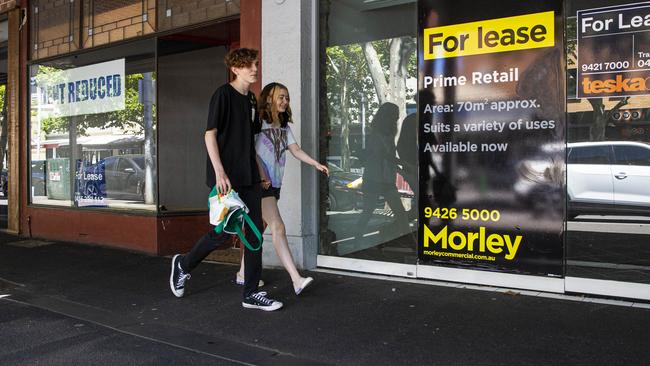
But, by the end of March, most of the COVID-19 moratoriums end and the landlords will discover whether their tenants can pay the back rent.
In the case of dwellings the multitude of Australians who have been engaged in negative gearing already suspect that their tenants will walk away, leaving them out of pocket.
Add that to the ongoing harsher landlord rules and many will decide to sell their property or leave it vacant rather than risk playing in the landlord-tenant jungle. Either way the shortage of rental accommodation, which was explained in The Weekend Australian by Katrina Grace Kelly, is going to get a lot worse post COVID-19. In many areas rents will rise sharply.
Landlords owning houses will normally have enjoyed a rise in the value of their property to compensate for any income loss but apartments in most situations have not fared as well. And those renting shops are now fearful that they have tenants, who have been surviving on government aid programs plus bankruptcy protection, who are in fact zombie companies. Like apartment dwellers, unless the shop can be converted to another use, the real estate in many areas has fallen in value.
The economics of being a landlord will be challenged by many property owners.
As most of our two million landlords only own a single property, the behaviour of individual tenants can be life-changing.
While each of the extensions of COVID protection legislation have been well received by tenants, it has caused a lot of pain for landlords who have been required to find other ways to pay their own bills.
In some cases, families have been unable to return to their own homes because they can’t evict their non rent-paying tenants. Retirees have been left without income and the uncertainty has festered in the landlord community.
Australian Landlords Association president Andrew Kent says: “When the initial measures were put in place there was some alignment between banks, landlords and business. That alignment is no longer there and banks are charging interest, businesses have reopened, but landlords have their hands tied while the amount of unpaid rent continues to grow.”

Historically, Australians with excess funds have chosen between superannuation and “bricks and mortar” for their retirement. Accordingly the majority of landlords are “mum and dad” Australians.
Property investment is often used by tradespeople to fund their retirement, particularly as they know they probably won’t have the physical capacity to earn a living from their trade in their late 60s but can do odd jobs on their investment dwelling.
Those that have paid off their dwelling investment have been able to battle through but seeing tenants in their houses or apartments sometimes living on social security but not paying rent has left a bitter taste.
For those with high levels of debt there has been severe financial distress because they have been unable to sell their properties due to the COVID legislative restrictions.
While the initial rental moratorium was aligned to the moratorium on loan payments, most governments have now extended the moratorium several times. NSW and Victoria have extended it to the end of March – which is potentially a whole year of unpaid rent.
The landlords are fearful that the powerful tenant organisations will press for even further extensions.
Meanwhile many landlords are now planning to undertake the difficult task of removing non rent-paying tenants and those that have damaged their property.
As that happens, a lot of houses and apartments will come on the market, which will ease the current shortage of properties which is boosting prices given the abundance of bank credit and low interest rates. This may take the heat out of the market but we will be witnessing a decline in rental stock.
The longer-term impact of state governments’ pro-tenant actions is not understood. Not only did the COVID measures shatter landlord confidence but the new rights of tenants, particularly in places like Queensland and Victoria, considerably increase the risks for landlords.
Good tenants will be greatly prized and may even enjoy lower rentals in “off market” deals.
In any security where income is high-risk then yields rise to adjust for that risk. Until the formation of the Australian Landlords Association all the power has been with the tenants but they overplayed their hand.
Katrina Grace Kelly quotes the head of research firm and buyers agency Propertyology, Simon Pressley: “The single biggest story for Australian real estate for these next few years will be fast-rising rents.”
The simple answer to the problem is to increase the investment in rental property and there is abundant capital available to undertake this task. But state governments, in trying to protect tenants, are actually often acting against the interest of those tenants by forcing up the rents.





Around Australia a significant proportion of the over two million landlords are on the edge of their seats. For most of the last year their tenants have been able to defer their rent obligations.